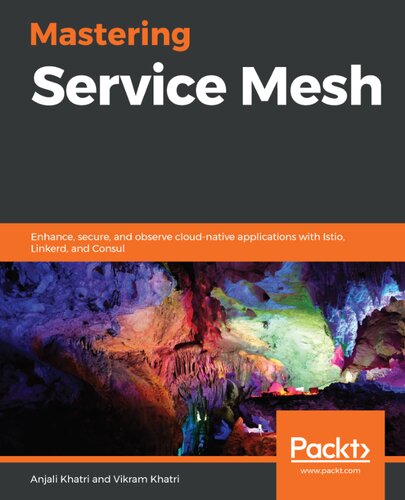

Most ebook files are in PDF format, so you can easily read them using various software such as Foxit Reader or directly on the Google Chrome browser.
Some ebook files are released by publishers in other formats such as .awz, .mobi, .epub, .fb2, etc. You may need to install specific software to read these formats on mobile/PC, such as Calibre.
Please read the tutorial at this link: https://ebookbell.com/faq
We offer FREE conversion to the popular formats you request; however, this may take some time. Therefore, right after payment, please email us, and we will try to provide the service as quickly as possible.
For some exceptional file formats or broken links (if any), please refrain from opening any disputes. Instead, email us first, and we will try to assist within a maximum of 6 hours.
EbookBell Team

5.0
48 reviewsUnderstand how to use service mesh architecture to efficiently manage and safeguard microservices-based applications with the help of examples
Key FeaturesAlthough microservices-based applications support DevOps and continuous delivery, they can also add to the complexity of testing and observability. The implementation of a service mesh architecture, however, allows you to secure, manage, and scale your microservices more efficiently. With the help of practical examples, this book demonstrates how to install, configure, and deploy an efficient service mesh for microservices in a Kubernetes environment.
You'll get started with a hands-on introduction to the concepts of cloud-native application management and service mesh architecture, before learning how to build your own Kubernetes environment. While exploring later chapters, you'll get to grips with the three major service mesh providers: Istio, Linkerd, and Consul. You'll be able to identify their specific functionalities, from traffic management, security, and certificate authority through to sidecar injections and observability.
By the end of this book, you will have developed the skills you need to effectively manage modern microservices-based applications.
What you will learnThis book is for solution architects and network administrators, as well as DevOps and site reliability engineers who are new to the cloud-native framework. You will also find this book useful if you're looking to build a career in DevOps, particularly in operations. Working knowledge of Kubernetes and building microservices that are cloud-native is necessary to get the most out of this book.
Table of Contents